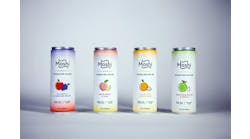Ask anyone what percent of new products fail. The usual answer is somewhere between 70-90 percent. With those odds why would anyone try?
However, in my opinion those are not the odds. In fact, I believe the food industry is doing much better than that, and I have the data to prove it.
Quite frankly, to survive in today’s market every food company needs new products. However, the most important question to ask is how many new products actually survive. When asked, I have almost always given those "party line" failure rates –which means only 10-30 percent are successful. However, I had no firsthand knowledge of these failure rates. I relied almost exclusively on other people's calculations and scuttlebutt.
The failure rate that is usually bandied about is from Inez Blackburn, a professor at the University of Toronto, who said, “The failure rate for new product introduction in the retail grocery industry is 70-80 percent. For smaller U.S. food businesses launching new products, the success rate was 11.6 percent.” She is not alone in the dismal projections of new product success as others offer similar estimates.
One of the difficulties in coming up with an industry standard for product success or failure is that there is no real consistency in how new product failure (or success) is defined. Each product may have a specific strategic purpose. After it serves that purpose, it is removed from a product line.
For example, I know of a company that used a number of new products to make a competitor’s new products more difficult to introduce. As soon as the competitor’s product failed, the company removed its own new product entries. It was a strategic success, not a failure, even though the “new” product was no longer on the market.
In order to answer the success rate question empirically, we used Mintel's Global New Products Database and company websites. We took a sample of the new product introductions from 2010-2012 for various food groups. We looked at about 1,500 new products from eight food categories: baby food, bakery, breakfast cereals, chocolate confectionery, dairy, desserts and ice cream, fruit and vegetables, meals and meal centers.
We defined failure to be any product that was not listed on the website at least 18 months after introduction. If the product was still available on the website in 2013, we called this a success. A failure was recorded if the product was not available on the website. We realize that we could have misidentified a failure because it was not on the website but was deemed a success by the company.
So how many products were successful by the definitions used above? 66 percent of all new products that were sampled and reported by Mintel were SUCCESSFUL. This is far more than the 20-30 percent that has been reported in the past. The success rates also were calculated for the eight product categories separately, and interestingly there is a significant variation across product categories as shown below:
| Baby Food | 87.5% successful |
| Bakery | 70.9% successful |
| Breakfast Cereals | 65.1% successful |
| Chocolate Confectionery | 78.2% successful |
| Dairy | 61.5% successful |
| Desserts and Ice Cream | 57.6% successful |
| Fruit and Vegetables | 62.2% successful |
| Meals and Meal Centers | 57.0% successful |
The failure rates historically used are much higher than what we determined in this research. It is my opinion the food industry is doing a much better job of focusing on the customer, and using marketing research to better understand exactly what the customers want. They're spending more time with retailers to glean their opinion of the potential success or failure of products. Finally, the speed to market and the role of new technology in innovation has made our new products more successful.
The irony is, as supermarkets and food manufacturers become more targeted, one might expect it to be more difficult to “hit a smaller target.” The reverse appears to be true. It may be that when everyone was aiming at the average American consumer they weren't focused enough. But when they realized there really is no average American, then they were forced to aim their new products more carefully.
I would argue that a company that has a new product success rate above 80 percent may not be taking enough risk. There's no question that being “first to market” is a huge advantage -- as well as being more risky. New product strategies based on “following the leader” may produce higher success rates but lower profits in the long run. America's food companies should be managing risk, not just avoiding risk.
When any of the three C's (consumer, competition or conditions) change you may need a new product! Remember the words of Charles Darwin who said, “In the struggle for survival, the fittest win out at the expense of their rivals because they succeed in adapting themselves best to their environment.”
The food industry has done a great job at bringing new food products to the American table. And it's being effective in doing so, making our food less expensive and the companies more profitable.

